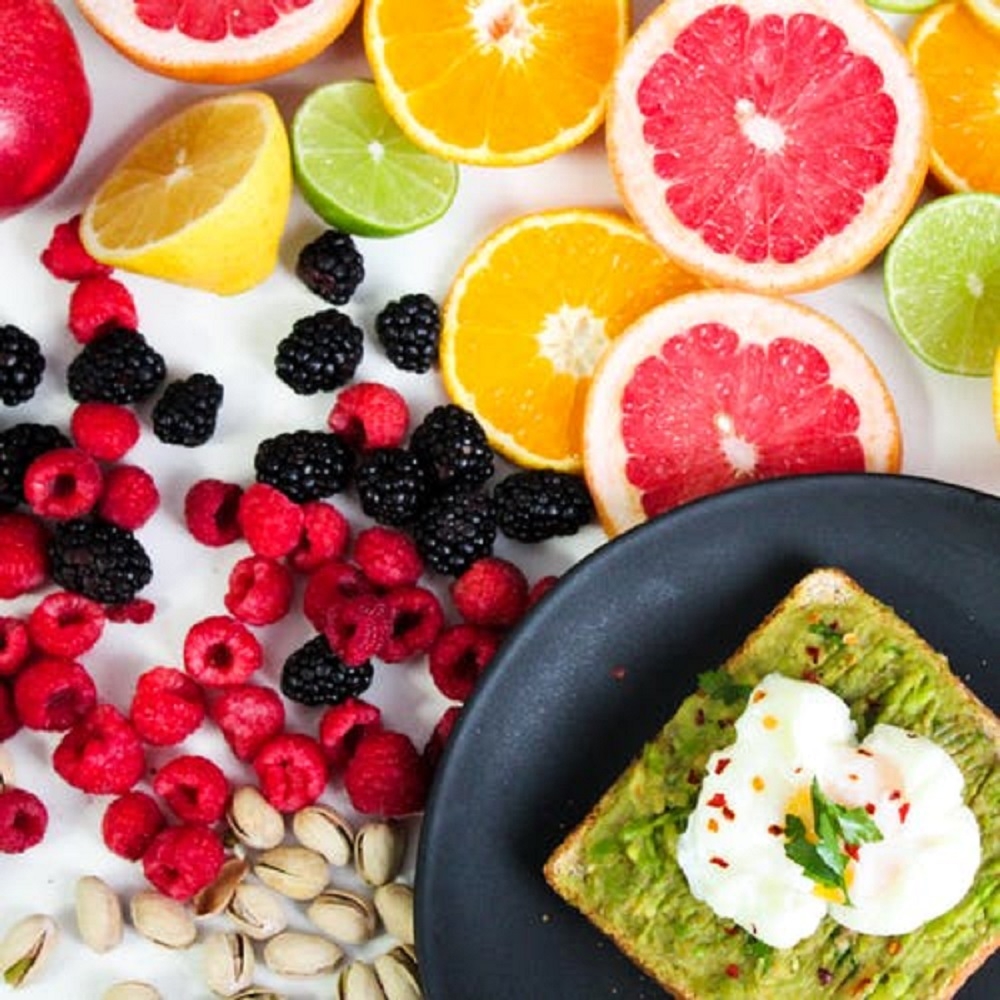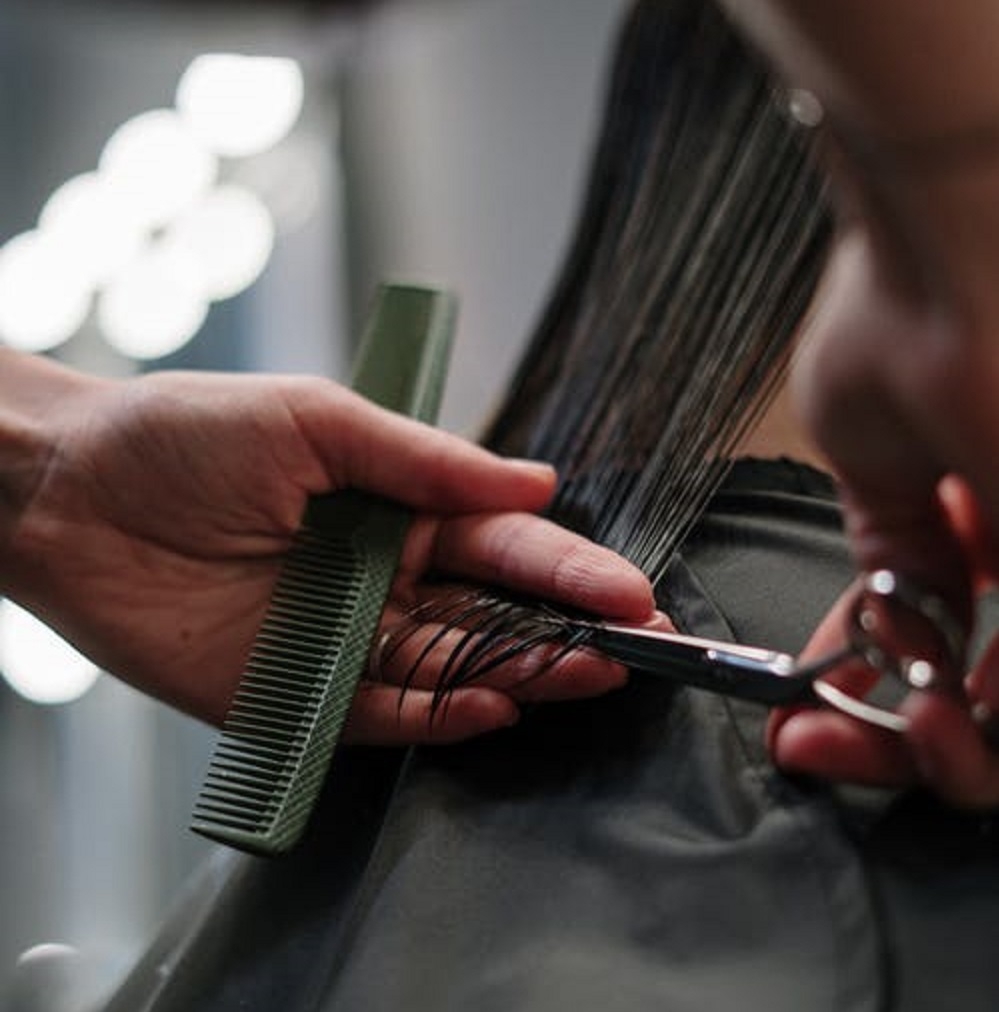5 Essential Hair Care Practices for Hijab-Wearing Women
Lifestyle
|
Aug 30, 2021
|
6 MIN READ

Melanie engaging in some hair care.
When it comes to hair care, many of us who wear the hijab, especially those of us who have worn the hijab for as long as we can remember, have pushed hair care to the backburner. Because we spend large amounts of our day with our hair covered, we often don’t think of caring for our hair until it comes time to take our hijab off, and we are suffering from flat, itchy, dull “hijab hair.” Maybe we’ve spent so much time thinking of how to keep our hair neatly covered, that we’ve not prioritized wanting our hair to look healthy and nice when it’s uncovered.
Years of tying our hair back in tight buns, brushing our hair backwards to keep it from peeping through and wearing cheap quality fabrics that are not breathable are sure to come with consequences. So, let’s talk about some tips for caring for your hair as a hijab-wearing woman as well as talking about why this is such an important part of wearing hijab.
Our body is an amanah, a trust, from Allah (S). Our body is our soul’s vessel in this world, and we have been entrusted by Allah (S) to take good care of it until we meet our Creator. Our hair is part of our body and well-being, and as Muslims it is important for us to take care of what has been given to us in order to show gratitude towards the One who blessed us with this amanah. We will be asked on the Day of Judgement about how we took care of our bodies.
How did we take care of ourselves and nourish our bodies? Finding time to do so is important, just like finding a simple hair care routine that you can implement into your day.
1. You are what you eat.

Image source: Pexels
As cliche as this may sound, this phrase is essential to understanding how and why we should take care of our hair (and bodies in general). What we feed our bodies has a direct impact on how our bodies will function and grow. Before I start filling my cart with hair products, I take a step back and make sure that my diet is a nutritious one and that I am including foods that will help my hair grow from the inside out.
Don’t get me wrong, using the right products for our hair is essential, however that is just on the outside. What is more important are the nutrients my hair is receiving from the inside to help maximize the function of the products I am using on the outside.
2. Know your hair type.
There are thousands of products out there for all hair types, and the only way to find out which products are most suitable for you is to do your own research and engage in simple trial and error, or through receiving recommendations. Getting familiar with your hair type is a great place to start when it comes to haircare and picking out the right products for your hair. Is your hair fine? Thick? Frizzy? Prone to breakage? Naturally textured? Tightly coiled? There are lots of charts and information that you can find online, or you can ask your hairstylist to help you pinpoint what hair type your hair falls under.
(This interview with Instagram’s 4c Hijabi specifically discusses haircare for women with natural hair. Also fellow blog writer Layla wrote a great piece about her and her daughter’s wash-day and hair care routine in our New Hijabi Starter Kit magazine.)

Image source: Andre Walker
Determining your hair type is extremely useful when trying to decide on what products you will use, because certain hair types have particular needs and demand certain products. This is especially true for natural, curly and/or textured hair. A great tip for curly-hair hijabis is to use a deep conditioning mask once a week and apply leave-in conditioner after washes.
3. Avoid breakage and tame frizz.
Many of us have experienced damage to our hair as a result of years of wearing our hijab too tight, or pulling our hair into a tight bun for several hours throughout the day. This is aside from the heat damage that we expose our hair to when we use a blow dryer, flatiron or curling wand. A useful – and quite ancient – technique used across many cultures is braiding your hair before going to bed.
Braids help with hair breakage and are a great way to keep your hair tidy. Braids are also a great alternative to tying your hair back under your hijab. They will provide less tension on your scalp and prevent a receding hairline the way a tight bun or high ponytail will. Sleeping on a silk or satin pillowcase is another great way to keep frizz at bay and retain your hair’s moisture from products and it’s natural oils. It also helps reduce the friction that can cause hair breakage and tangles.
Using a microfiber hair towel to dry your hair is another great technique that helps with breakage and frizz. It’s also good practice to dry your hair as much as possible before putting your hijab on. Consistently putting a hijab on wet or damp hair can lead to a scalp infection or irritation due to the moisture being locked in for several hours or the entire day.
4. Wash your hair properly and trim regularly.

Image source: Pexels
The number of times you should wash your hair and how often you should trim really depends on your hair type. A good rule of thumb is to give your hair a trim at least twice a year. Is your hair oily and needs to be cleaned regularly? Or is it dry and needs minimal washing to maintain as much moisture as possible? Talk to your hairstylist or a friend who knows her hair stuff to get some more insight on how often you should be washing.
A great way to deep clean your hair and scalp from all the product build up as well as strengthen hair roots and relax your scalp muscles is using a hair scalp massage shampoo brush. It’s also important to know what is inside your products. Using vegan products that are silicone, paraben and sulfate free are great for keeping chemicals away and using natural ingredients to nourish your hair.
(Check out this article by Melanie about how her use of Fekkai products helped bring her hair back to life. Also, this oldie-but-a-goodie “Ask Melanie” column about combatting “hijab hair.”)
5. Your hair care continues underneath your hijab.

Image source: Pexels
Taking care of your hair doesn't stop once you put your hijab on for the day. The fabric you choose to wear, the hair ties, the way in which you tie your hair are all contributing factors to your hair health. Making sure your hijabs are of the highest quality from a brand you trust and love is important (you know, like Haute Hijab :). I personally grew up wearing viscose and pashmina hijabs from fast fashion clothing and accessory stores. Those fabrics were never meant to be worn on the head. They were definitely not breathable and not always the softest on my skin and hair.
I also grew up wearing a tight underscarf, which has resulted in a receding hairline that I have been slowly treating. Our HH underscarves are crafted with only the highest quality fabric technology for our hijabi’s and their hair! There are a variety to choose from depending on your needs, so be sure to check them out.
Tying my hair back in a low and loose half bun has also helped me loosen up the tension on my scalp and hair loss around my hairline. Check out this useful video by a fellow hijabi who shares her top five hijabi hair care tips for avoiding hair loss. Using a silk or satin hair tie instead of a hair elastic is also useful in reducing tension on the hair and scalp. To avoid tension on my hairline, I also like to part my hair in the middle or change my side part before tying it.
Also, don’t forget to let your hair breathe and see some sun if possible! Our hair, just like our skin, needs fresh air and vitamin D. Give yourself some time in your backyard or back porch if possible to let the wind blow in your hair. Let your hair down when your hijab is off to give it a break from that hair tie. Trust me, your hair will thank you!
What are your go-to hair care tips for hijab-wearing women? Or women in general? Share with us in the comments below!
Subscribe to be the first to know about new product releases, styling ideas and more.
What products are you interested in?

